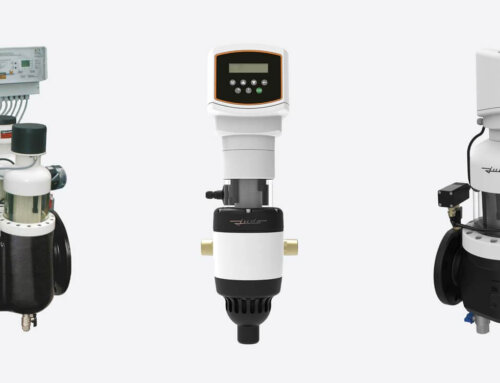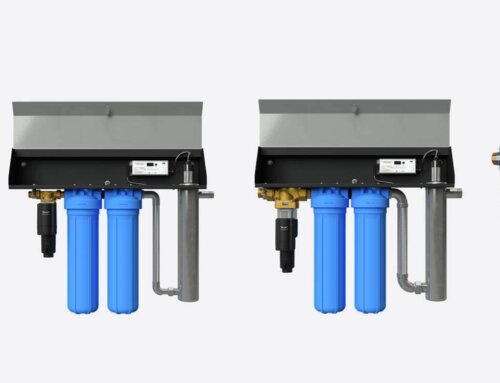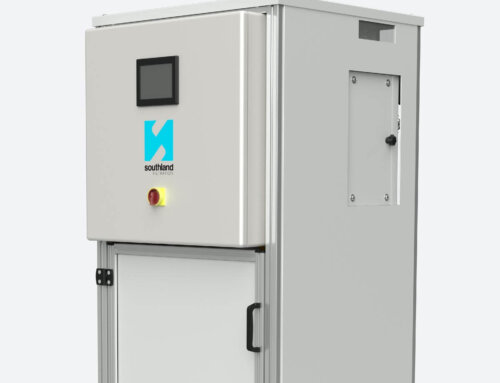Date: 11/08/2023
Read Time: 11 minutes
Author: Dr Surani McCaw, B.E. (Chemical), Ph. D

Key points:
- Emphasises crucial modifications to the standard, including defining chemical purity limits, transitioning to dedicated steam generators, and adjusting routine monitoring frequencies for water quality and endotoxin levels.
Introduction
Recently, the Australian government sought public input on the newly proposed Australian Standard 5369:2023, which applies to reprocessing reusable medical devices in both healthcare and non-healthcare facilities.
We share our response and what we propose to be the critical changes Australian Standard 5369:2023 requires. Ultimately, our goal is twofold. Firstly, to challenge and push all purified water plant suppliers to be responsible in designing solutions that will not proliferate bacteria. And secondly, for those involved in the procurement of purified water plants to make informed decisions. Whether they are builders, facility managers, and NUMs, they should be basing their decisions on scientific facts, research, and evidence.
Dr Surani McCaw, who authored the response adds “I’m also passionate about our ecosystem. I’d like to see all healthcare decision makers focus on procuring RO systems that conserve water and energy. From my experience, an eco-friendly RO system is typically more expensive to manufacture but lower to run. Whereas an RO system that is cheaper to manufacture is expensive to run because it wastes a lot of water and electricity.”
We firmly believe that Healthcare standards and regulations should uphold the highest standards of care, safety, efficacy, and sustainability. There are two important components to maintaining the standard of care. One is setting compliance limits. The other is performance monitoring to hold the supplier accountable. Otherwise, the true costs are wide-ranging, from impacting patient health to operational and capital expenditure budgets.
7.2.3.1 Water Quality
Chloride
Chloride can cause pitting corrosion in stainless steel and other metals. Notes should highlight the importance of not exposing metal components to water containing Chloride levels greater than 120 mg/l.
Proposed change
Note 3: Quality of water with Chloride level greater than 120 mg/l may not be suitable for reprocessing of non-invasive, non-critical medical devices and healthcare equipment with stainless steel or other metal components.
“In accordance with WD technical specifications”
The statement “In accordance with WD technical specifications” does not set a specific standard. It allows for misinterpretation that can cause harm. When the chemical purity limits are not set by the standard, it does not prevent suppliers or contractors from introducing high concentrations of chemical disinfectants or oxidants to the water line to meet the specified microbial limits. Depending on the level and the type of bioburden in the hospital piping network, or the washer-disinfector design/installation, high concentrations of disinfectants can generate high concentrations of endotoxins. These can accumulate or be present in areas within the endoscopes. Depyrogenation cannot be achieved in thermolabile endoscopes.
Proposed change
Chemical purity must be defined to ensure all AFER suppliers follow the same standard of care and for consistency in water quality provided to AFERs in every geographical location within Australia.
30 EU/ml limit for endotoxins
In a fit-for-purpose purified water system, a limit of 30 EU/ml when aiming for zero Pseudomonas Aeruginosa and Mycobacteria and < 10 cfu/100ml of TVC, cannot be correlated.
Due to the relationship between chemical water quality, TVC, P. Aeruginosa and endotoxin in a water treatment system that is not fit for purpose, accumulation of endotoxins is inevitable.
The stated 30 EU/ml limit for endotoxins promotes negligent practices in the control of bacteria. This limit does not take into consideration the nature of endotoxins. It dismisses the scientific fact that the size of endotoxins generated depends on their LPS structure, the pH and the salt concentration of water. It also dismisses the fact that they can accumulate (and adhere to surface) in a poorly designed water treatment system.
The chemical purity limit set by AS5369 must not be to suit what the AFER suppliers/manufacturers want or states. AS5369 must set the standard of care for the patients and staff, taking into consideration the incoming town water quality/condition/variations at the reprocessing facility.
Proposed change
1. If the chemical purity of water is dismissed, reduce the endotoxin limit to ≤ 0.25 EU/mL in line with Table 7.2
2. If ≤ 30 EU/mL is to remain, specify a chemical purity limit (including disinfectant and disinfection byproducts) that will not promote negligent practices
7.2.3.2.2 Steam generation for sterilizers
Use of boiler steam
It is understandable that at present, not all hospitals incorporate a dedicated steam generator for sterilisers. However, it is advisable that we take the same approach taken when transitioning from town water to RO water supply to WDs. The standard should be written to direct the facilities to phase out from the use of boiler steam to eliminate any potential contamination risk of steam with boiler chemicals. As stated in ISO5111, section 7.1.6, “Maintenance to the steam generator, such as use of descaling chemicals or changes to the water treatment, can cause the level of chemical contaminants to exceed the specified maximum”.
Proposed change
Where non-dedicated steam generators are installed, replacement or refurbishment works must include the installation of dedicated steam generators where steam generation must be without the aid of chemicals.
8.2 Routine monitoring and control of cleaning processes
Testing frequency for chemical and microbial purity in WDs
“Supply water hardness and chloride” and “Final rinse water conductivity” should be monitored monthly for the life of the equipment. To maintain equipment performance and longevity, water hardness and chloride concentration monitoring frequency must not be reduced. Even if the values remain within the specifications but trends indicate a gradual increase, actions may be required to maintain the equipment’s performance and life.
Table 8.1 – Requirements for routine monitoring and control of cleaning and disinfecting equipment, states the following. This gives the user the authority to determine the frequency of testing according to test results:
- “a – Frequency may be adjusted (increased or decreased) according to test results to ensure they remain within the specifications (see for guidance).”
- “d – Monthly for the first 12 months, then frequency may be adjusted to a minimum of annually provided test results remain with specification.”
As stated in section A.7.2.3.1, “The frequency for conducting routine monitoring should be guided by a risk assessment”.
In reference to WD ISO 15883-2, when the purified water system incorporates minimum design requirements to achieve ≤100 cfu/100ml of TVC, it is uncommon to find non-compliant results within 12 months from the date of commissioning. In most cases, well-designed fit for purpose purified water systems will achieve compliance for more than 10 years. Systems that are lacking key design elements typically fall short, close to their 3-year life cycle, due to biofilm build-up. If the facility neglected to identify such occurrences without delay, meeting microbial compliance can become impossible. This will lead to the premature replacement of the purified water system.
As such, it is industry best practice to monitor TVC within a purified water system monthly as minimum. The frequency of TVC testing should not be left at user discretion.
Even if the water complies with the specified TVC limit, depending on the design of the water storage and distribution system, the endotoxin level (due to accumulation of endotoxin) can be high. For this reason, the endotoxin level must be monitored monthly, as a minimum until this is proven otherwise. Once the endotoxin level consistently remains within specification, then the monitoring frequency can be decreased. However, the frequency must be bi-annual as a minimum.
Annual endotoxin monitoring is not recommended as this will result in premature replacement of the purified water system.
In reference to WD ISO 15883-4, with common practices, such as raising the town water supply to a temperature between 35 and 45oC, combined with < 1 micron filtration and chemical disinfection, the risk of generating endotoxin is greater.
Even if the water used in WD ISO 15883-4 complies with the specified TVC limit, depending on the design of the water storage and distribution system, the endotoxin level (due to accumulation of endotoxin) can be high. For this reason, the endotoxin level must be monitored monthly, as a minimum until this is proven otherwise. Once the endotoxin level consistently remains within specification, then the monitoring frequency can be decreased. However, the frequency must be bi-annual as a minimum.
Annual endotoxin monitoring is not recommended as this will result in the premature replacement of water treatment equipment as well as the WDs.
Proposed change
Proposed changes to Table 8.1 – Requirements for routine monitoring and control of cleaning and disinfecting equipment in reference to WD ISO 15883-1, WD ISO 15883-2 and WD ISO 15883-4 are:
- Supply water hardness and chloride – Monthly
- Final rinse water conductivity – Monthly
- Final rinse water TVC – Monthly
- Final rinse water Endotoxin – Monthly unless the trend over a minimum 24-month period indicated otherwise. If endotoxin concentration is consistently within the guideline limit (i.e., reported as an actual measured value, rather than the value stated as ≤ “the guideline limit”) with no evidence of gradual increase (but still at ≤ “the guideline limit”), then guided by a risk assessment process, the monitoring frequency can be decreased but it must be bi-annual as minimum.
Sampling WDISO 15883-4
The following comments are in reference to Table 8.1 – Requirements for routine monitoring and control of cleaning and disinfecting equipment, guidance notes for AFERs which states:
- NOTE 2 – Water quality sampling on WD (ISO 15883-4) is conducted at the point where the endoscope connects to the WD (AFER).
- NOTE 4 – If any water specification in Table 7.2 and table 7.3 is exceeded, the testing frequency should be increased until the results show the system is back under control.
In reference to Note 2, it is recommended that water quality monitoring to meet Table 7.3 be conducted at the feed to the WD (AFER) (i.e. post water treatment unit) as well as at the point where the endoscope connects to the WD (AFER).
Provided that residual high-level disinfectant is not present within the AFER, the results would be the same within a % of error. Water sampling only at the point where the endoscope connects to the AFER will not hold the water treatment equipment supplier/provider accountable for meeting Table 7.3.
In reference to Note 4, where the water monitoring frequency for endotoxins is specified as annual, if non-compliance is detected 12 months later, any rectification works will be futile. Depending on the level of endotoxin detected, due to the nature of endotoxins, the task of getting the level back down to compliance level can be impossible without the replacement of the water treatment system and associated pipework.
Proposed change
Water quality sampling on WD (ISO 15883 4) is conducted at the following points as a minimum:
- at the feed to the WD (AFER), post filtration system
- at the point where the endoscope connects to the WD (AFER).
Conclusion
In conclusion, our paper highlights the critical importance of setting uncompromising standards and regulations in medical device reprocessing to ensure the utmost care, safety, efficacy, and sustainability. There are two important components to maintaining the standard of care. One is setting compliance limits. The other is performance monitoring to hold the supplier accountable.
We call upon all purified water plant suppliers to shoulder the responsibility of designing solutions that effectively prevent the proliferation of bacteria. Equally, we urge those involved in the procurement process, including builders, facility managers, and NUMs, to base their decisions on scientific facts, research, and evidence. Failure to do so could lead to far-reaching consequences, encompassing compromised patient health and significant impacts on operational and capital expenditure budgets. By collectively embracing a commitment to excellence and informed decision-making, we can pave the way for a future where medical device reprocessing stands as a pillar of confidence and reliability in healthcare systems.
About Dr McCaw (BE(Chemical), PhD)
Dr Surani McCaw is a Chemical Engineer with over 25 years of industrial experience, specialising in water treatment in the Healthcare and Pharmaceutical Industries.
Surani holds a Bachelor of Engineering (Chemical) degree and a Doctor of Philosophy degree in water treatment from the University of NSW, Kensington, NSW.
Dr McCaw has been involved in the implementation of National Healthcare Standards/Practices for both CSSD and Renal Dialysis since 2008 with the intention of evaluating and implementing risk managed and cost-effective water treatment technologies that are fit for the Australian ecological and demographical environment.
To learn about how we serve the healthcare sector visit this page.




